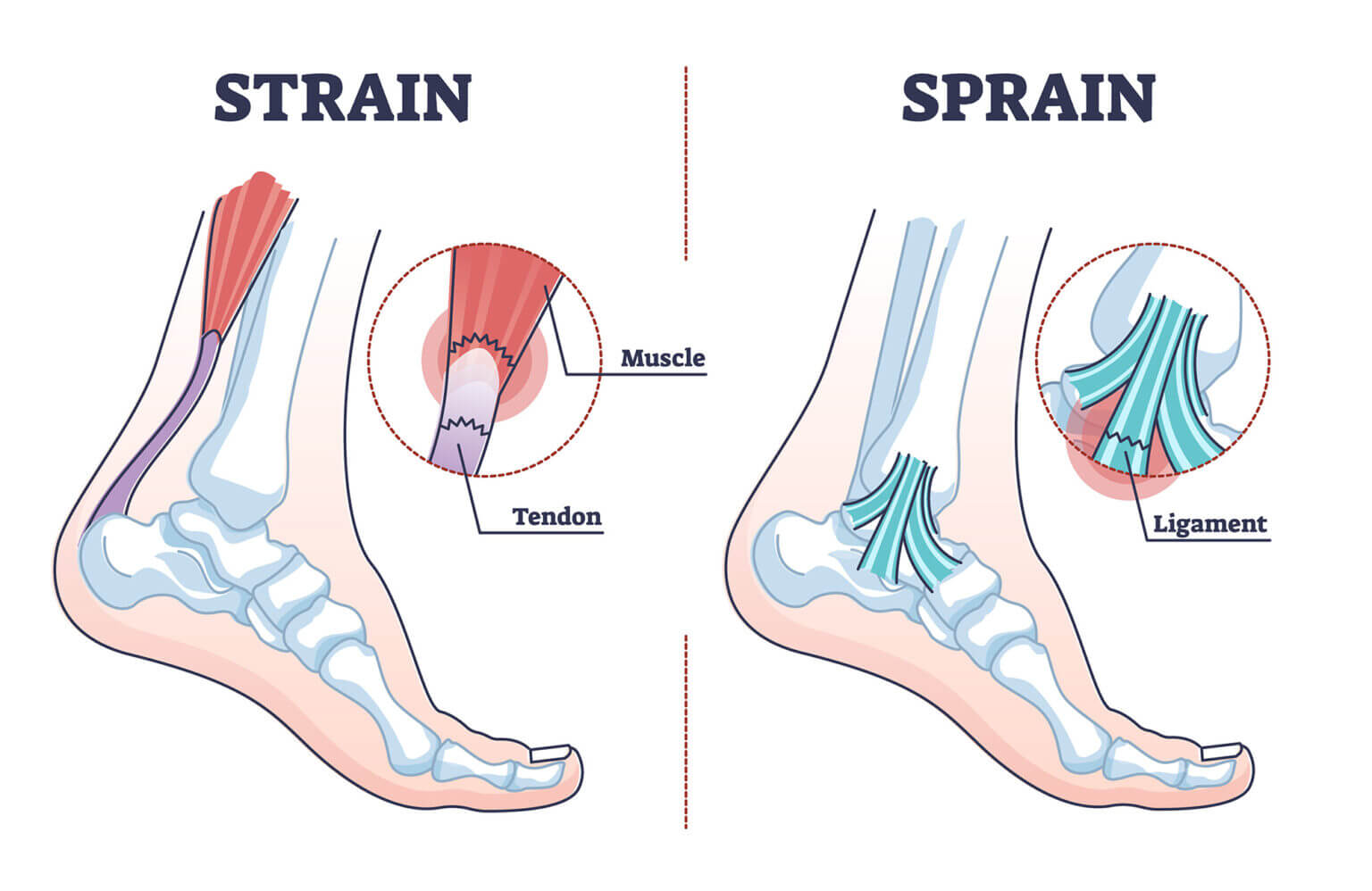
Accidents happen, whether you're an athlete or just going about your daily routine. When you suddenly feel pain after a twist, fall, or overexertion, it's often a sprain or a strain. While these terms are frequently used interchangeably, they refer to different types of injuries, each requiring a slightly nuanced approach to recovery. Understanding the distinction is the first step towards effective healing.
What is a Sprain?
A **sprain** is an injury to a **ligament**, the tough, fibrous tissues that connect bones to other bones and help stabilize joints. Sprains occur when a ligament is stretched or torn, often due to a sudden wrenching or twisting motion that forces a joint beyond its normal range of motion.
Common Locations for Sprains:
- Ankle: The most common sprain, often happening when the foot rolls inward.
- Knee: Injuries to the ACL, MCL, PCL, or LCL ligaments.
- Wrist: Often from falling on an outstretched hand.
Symptoms of a Sprain:
- Pain (often sharp, immediately after injury)
- Swelling
- Bruising
- Limited ability to move the affected joint
- A "pop" sound or sensation at the time of injury (especially for severe sprains)
What is a Strain?
A **strain** is an injury to a **muscle or tendon**. Tendons are fibrous cords that connect muscles to bones. Strains typically occur when a muscle or tendon is overstretched or torn, often from overuse, fatigue, or improper use of a muscle.
Common Locations for Strains:
- Hamstring: Common in sports involving running or jumping.
- Groin: Often occurs in athletes who frequently change direction.
- Back: Lifting heavy objects improperly is a frequent cause.
- Shoulder: Often seen with repetitive overhead movements.
Symptoms of a Strain:
- Pain (often dull or aching, but can be sharp)
- Muscle spasms
- Swelling
- Limited movement or weakness in the affected muscle
- A "knot" or palpable defect in the muscle (for severe strains)
Initial Steps for Both: R.I.C.E.
Regardless of whether it's a sprain or a strain, the initial management is similar and follows the **R.I.C.E. protocol**:
- Rest: Avoid activities that cause pain. Depending on severity, this might mean crutches or a brace.
- Ice: Apply ice packs for 15-20 minutes every 2-3 hours for the first 24-48 hours to reduce swelling and pain.
- Compression: Use an elastic bandage to wrap the injured area firmly, but not too tightly, to help minimize swelling.
- Elevation: Keep the injured part elevated above the level of your heart to reduce fluid accumulation.
While R.I.C.E. is excellent for initial management, it's crucial to seek professional assessment. A physiotherapist can accurately diagnose your injury, determine its severity, and guide you through a targeted rehabilitation program to ensure proper healing and prevent re-injury. Don't let a minor injury become a chronic problem – early intervention leads to faster and more complete recovery.